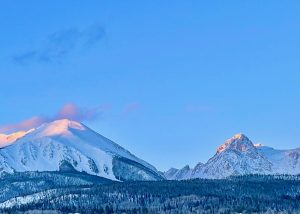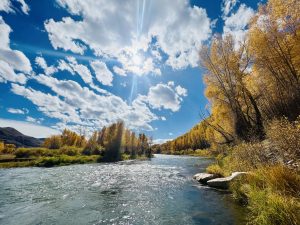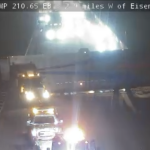Get Wild: The 12 seasons of Colorado
Get Wild
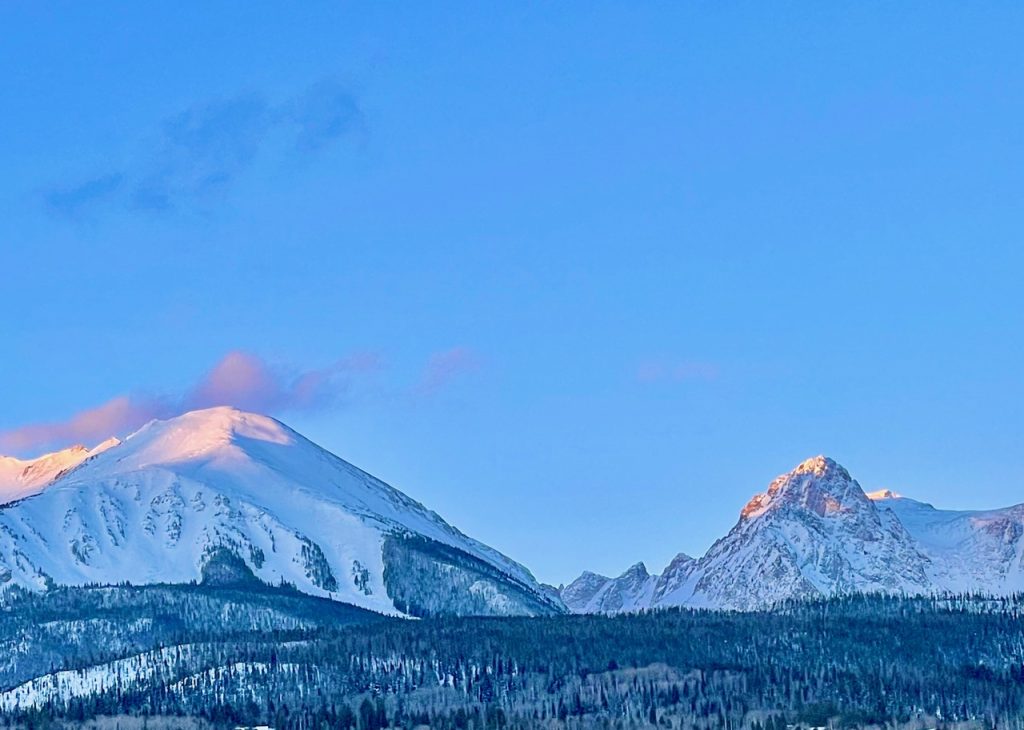
Karn Stiegelmeier/Get Wild
When Chaffee County Search and Rescue North posted the “12 seasons of Colorado” graphic on their social media channels in 2021, it was widely shared and picked up by news media across the state. Why? Because it’s so crazy, and yet so true. Many places in the U.S. like to say, “If you don’t like the weather, just wait a minute.” But most of those places can’t claim to have the erratic and constantly changing weather of the Colorado High Country, especially during the spring and fall shoulder seasons.
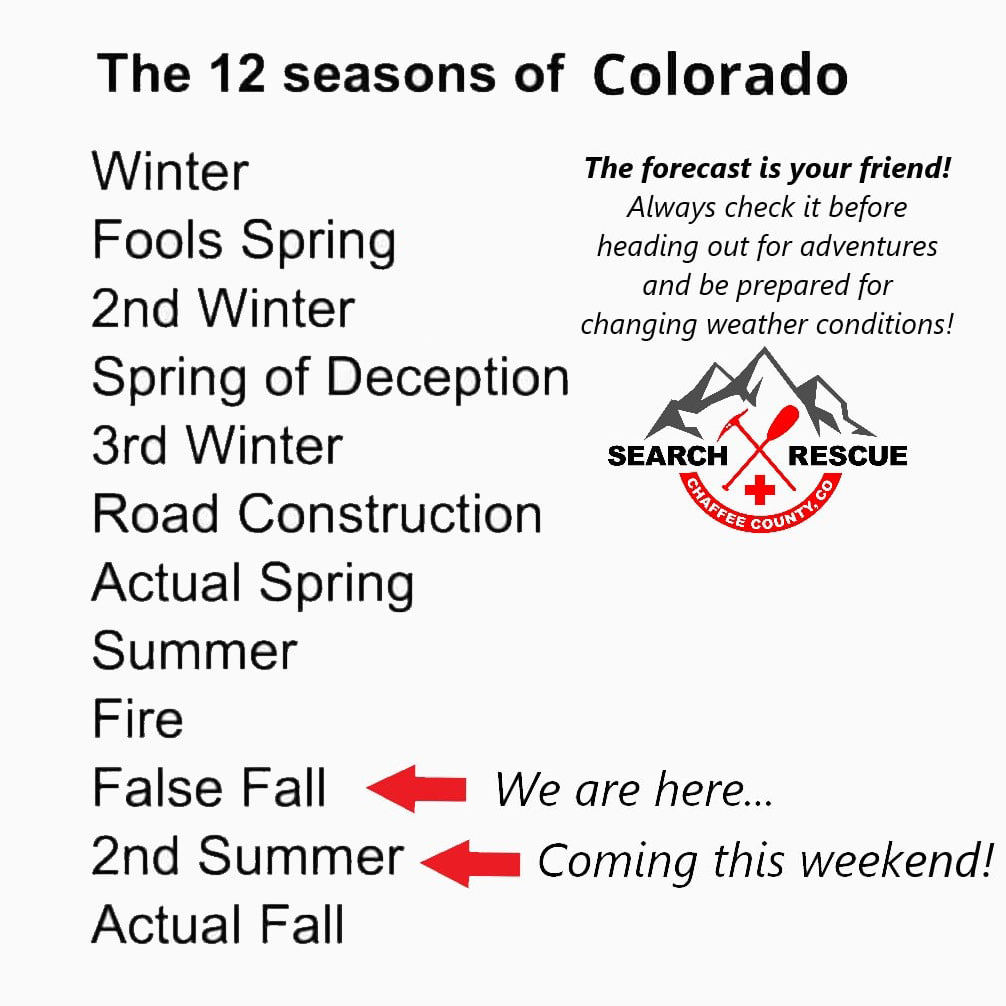
In October and November, mountain rescue teams in Colorado get calls like this:
- “We were hiking and got caught in a hailstorm. We weren’t prepared for that.”
- “My daughter was supposed to be off the mountain by now. It’s snowing and I don’t think she expected that.”
- “We got lost and the sun went down before we could get back to the trailhead. We didn’t realize it would be so much colder at night and my husband is getting hypothermic.”
- “We’re stuck and postholing up to our waists. The trailhead was dry, so we didn’t realize there would be so much snow up here.”
It’s important for backcountry recreationists in the Colorado mountains to check weather forecasts constantly, right up to and even during their outing. It’s also important to keep your head on a swivel and watch for signs of incoming weather, despite what the forecast says. If you see storm clouds approaching, it probably no longer matters that the forecast said it was going to be sunny and 55 degrees.
If you’re climbing 14ers, there are many online resources that can help you plan with current information on trail and snow conditions. You can read more about what to use — and what not to use — at ColoradoSAR.org.
You should pack your backpack for the worst-case weather scenario, including extra layers; some kind of shelter like a bothey bag, bivvy sack or space blanket; fire-starting materials; and goggles if you’ll be traveling near and above treeline. If something goes wrong and you’re out later than expected, you should have what you need to wait until a backcountry search and rescue team reaches you. You should also have realistic expectations about how long that will be and how cold you’ll get when not moving. If it took you four hours to get where you are, it will take us at least as long. Rarely do these situations push people into survival situations, but having to wait will seriously challenge your ability to stay warm. Maintaining body temperature is very important for injured people, and the warmer everyone else in the group is, the better they’ll be able to help the injured person until rescuers arrive.
You’ll also want to pay attention to road conditions if you’re driving to a remote trailhead. Sudden changes in weather can create muddy or snowy road conditions that can leave you stuck on the way in — or stranded at the trailhead and unable to get back out. Know what your vehicle is capable of as well as what weather is expected. Carry a shovel and emergency survival gear in your vehicle and pay attention to the suitability of your tires.
It’s easy to make jokes about the unpredictability of Colorado’s weather. But the wise backcountry recreationist knows the need for solid planning and preparedness is no joke.
“Get Wild” publishes on Fridays in the Summit Daily News. Anna DeBattiste is a volunteer public information officer with the Colorado Search and Rescue Association and a former public information officer with Summit County Rescue Group.


Support Local Journalism

Support Local Journalism
As a Summit Daily News reader, you make our work possible.
Summit Daily is embarking on a multiyear project to digitize its archives going back to 1989 and make them available to the public in partnership with the Colorado Historic Newspapers Collection. The full project is expected to cost about $165,000. All donations made in 2023 will go directly toward this project.
Every contribution, no matter the size, will make a difference.
